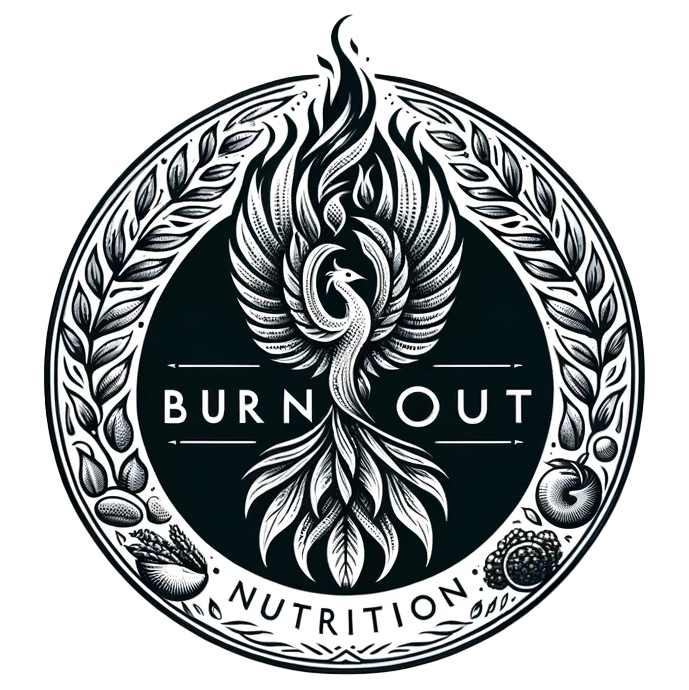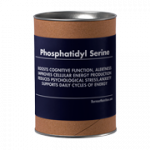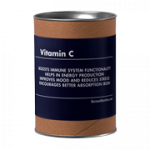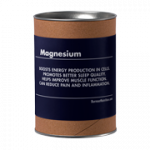To support muscle recovery and growth, consume 20-40 grams of high-quality protein within 45 minutes after a workout. This maximizes your body’s ability to repair and rebuild muscle fibers.
For daily protein needs, aim for 1.6-2.0 grams per kilogram of body weight, spread across 4 evenly spaced meals. This steady supply of amino acids fuels muscle building and recovery.
Excellent protein sources include:
| Source | Examples |
|---|---|
| Complete Proteins | Meat, dairy, eggs, soy |
| Plant-Based Proteins | Grains, legumes, nuts, seeds (combine for all amino acids) |
Consider a fast-digesting protein powder like whey after workouts for a convenient amino acid boost.
Stay hydrated, prioritize rest and recovery activities, and consult a professional to determine your optimal protein intake for your individual needs.
Related video from YouTube
Protein and Muscle Repair
How Protein Builds Muscle
Protein is vital for building and repairing muscle tissue. When you exercise, the repeated muscle contractions cause tiny tears in the muscle fibers. Protein provides the amino acids needed to fix these tiny tears and rebuild the damaged muscle fibers, making them stronger.
After a workout, your body enters a state where it uses available amino acids to repair and rebuild the muscle fibers. Consuming protein after exercise fuels this process, allowing your muscles to recover and grow stronger.
Types of Proteins
Proteins are made up of amino acids, which are the building blocks of muscle tissue. There are 20 different amino acids, and the human body can produce only 11 of them. The remaining nine must be obtained from food sources.
Complete Proteins Complete proteins contain all nine essential amino acids in the right amounts needed by the body. These are typically found in animal-based sources such as:
| Source | Examples |
|---|---|
| Meat | Beef, chicken, pork |
| Fish and Seafood | Tuna, salmon, shrimp |
| Eggs | – |
| Dairy | Milk, cheese, yogurt |
Incomplete Proteins Incomplete proteins lack one or more of the essential amino acids. These are primarily found in plant-based sources such as:
| Source | Examples |
|---|---|
| Grains | Rice, wheat, oats |
| Legumes | Beans, lentils, peas |
| Nuts and Seeds | Almonds, peanuts, sunflower seeds |
| Vegetables | Broccoli, spinach, carrots |
To get all the essential amino acids from plant-based sources, it’s important to consume a variety of incomplete proteins throughout the day. For example, combining rice (lacking lysine) with beans (lacking methionine) provides a complete protein source.
Calculating Protein Needs
Daily Protein Requirements
The amount of protein you need daily depends mainly on your body weight. A general rule is to consume 0.8 to 2.0 grams of protein per kilogram (2.2 lbs) of body weight per day.
To calculate your daily protein needs:
- Find your body weight in kilograms (divide pounds by 2.2).
- Multiply your weight in kilograms by 0.8 to 2.0, based on your activity level.
For example, if you weigh 70 kg (154 lbs):
- Sedentary lifestyle: 70 kg x 0.8 g/kg = 56 g protein per day
- Active lifestyle: 70 kg x 1.2 g/kg = 84 g protein per day
- Very active/athlete: 70 kg x 2.0 g/kg = 140 g protein per day
Activity Level and Protein
Your activity level and exercise routine impact your protein needs for muscle recovery and growth. The table below provides general guidelines:
| Activity Level | Protein Needs (g/kg body weight) |
|---|---|
| Sedentary | 0.8 – 1.0 g/kg |
| Moderately Active | 1.0 – 1.2 g/kg |
| Very Active/Athlete | 1.6 – 2.0 g/kg |
| Strength Training | 1.6 – 2.0 g/kg |
These are general recommendations. Your individual needs may vary based on factors like age, gender, and fitness goals. It’s best to consult a healthcare professional or registered dietitian to determine your optimal protein intake.
Timing Your Protein Intake
When you consume protein around your workouts matters for optimal muscle recovery and growth. Eating protein at the right times helps maximize muscle-building.
Before and After Exercise
Eat 20-40 grams of high-quality protein within 30 minutes before and after your workout. This helps:
- Provide amino acids for building muscle
- Kickstart muscle repair and recovery
- Support muscle growth and strength gains
Pre-workout protein primes your muscles with amino acids. Post-workout protein replenishes depleted amino acids and initiates muscle rebuilding.
The Muscle-Building Window
The "muscle-building window" refers to the ideal time to consume protein after exercise for maximum muscle growth. Research suggests this window falls within 30 minutes to 2 hours post-workout.
During this period, your muscles are primed to use protein and amino acids for repair and growth. Eating protein within this window can:
- Enhance muscle recovery and growth
- Replenish energy stores
- Reduce muscle soreness and fatigue
While timing is beneficial, meeting your daily protein needs remains crucial. As long as you get enough protein overall, you can still build muscle even if you miss the muscle-building window occasionally.
| Timing | Protein Intake |
|---|---|
| Pre-Workout | 20-40 grams within 30 minutes before exercise |
| Post-Workout | 20-40 grams within 30 minutes after exercise |
| Muscle-Building Window | 30 minutes to 2 hours after exercise |
Protein Sources
Animal Protein
Animal proteins are complete proteins, meaning they contain all the essential amino acids needed for muscle growth and repair. Good options include:
-
Meat (beef, pork, lamb): Lean cuts like sirloin and tenderloin are high in protein and low in fat. A 3-ounce serving of lean beef has around 25 grams of protein.
-
Poultry (chicken, turkey): Chicken and turkey breast are lean protein sources. A 4-ounce chicken breast contains around 35 grams of protein.
-
Fish and Seafood: Salmon, tuna, cod, and shrimp are high in protein and healthy fats. A 3-ounce portion of salmon provides around 22 grams of protein.
-
Eggs: One large egg contains around 6 grams of high-quality protein.
-
Dairy Products: Greek yogurt, cottage cheese, and milk are excellent protein sources. One cup of Greek yogurt contains around 20 grams of protein.
Plant Protein
While most plant proteins are incomplete (lacking one or more essential amino acids), you can get complete proteins by combining different sources. Great options include:
-
Legumes (beans, lentils, peas): Lentils, black beans, and chickpeas are high in protein, with around 15 grams per cooked cup.
-
Soy Products (tofu, tempeh, edamame): Soy is a complete protein. One cup of cooked edamame contains around 17 grams of protein.
-
Nuts and Seeds: Almonds, chia seeds, and pumpkin seeds are protein-rich. One ounce of almonds has around 6 grams of protein.
-
Whole Grains: Quinoa, brown rice, and oats contain moderate amounts of protein. One cup of cooked quinoa has around 8 grams of protein.
To get all essential amino acids from plant sources, combine different proteins, such as rice and beans or hummus with whole-grain pita.
Protein Content Comparison
| Food | Serving Size | Protein (g) |
|---|---|---|
| Chicken Breast | 4 oz | 35 |
| Salmon | 3 oz | 22 |
| Lean Beef | 3 oz | 25 |
| Greek Yogurt | 1 cup | 20 |
| Lentils (cooked) | 1 cup | 18 |
| Tofu | 1/2 cup | 10 |
| Quinoa (cooked) | 1 cup | 8 |
| Almonds | 1 oz | 6 |
As shown, animal proteins like chicken, fish, and lean meats tend to be higher in protein per serving than most plant sources. However, by combining different plant proteins, you can meet your daily protein needs for optimal muscle recovery.
sbb-itb-cf04d29
Adding Protein to Your Diet
Protein-Rich Meals and Snacks
Eating protein-packed foods throughout the day helps meet your needs for muscle recovery. Try these simple options:
- Yogurt Parfaits: Layer Greek yogurt with fresh berries, nuts, and granola for a protein-rich breakfast or snack.
- Nut Butter Roll-Ups: Spread peanut or almond butter on a whole-grain wrap, add sliced banana or apple, and roll it up for a portable snack.
- Protein Smoothies: Blend fruits, veggies, milk, and a scoop of protein powder for a nutrient-dense smoothie.
- Hard-Boiled Eggs: Keep a batch of hard-boiled eggs in the fridge for a quick, high-protein snack or addition to salads and sandwiches.
- Edamame: Steam or boil frozen edamame for a plant-based protein snack or side dish.
- Hummus and Veggies: Pair hummus (made from chickpeas) with sliced veggies like carrots, bell peppers, and cucumber for a satisfying snack.
Meal Planning for Protein
With some planning, you can easily add protein to your daily routine:
- Meal Prep: Cook a batch of lean protein sources like chicken, turkey, or tofu at the start of the week, and portion them out for easy meal assembly.
- Protein-Packed Breakfasts: Start your day with protein-rich options like eggs, Greek yogurt, or a protein shake.
- Snack Packs: Prepare portable snack packs with items like jerky, nuts, and cheese sticks for a protein boost on the go.
- Protein Additions: Add beans, lentils, or quinoa to soups, salads, and stir-fries for extra protein.
- Leftovers: Cook extra portions of protein-rich meals and repurpose the leftovers for quick lunches or dinners throughout the week.
| Meal/Snack | Protein Source | Serving Size | Protein (g) |
|---|---|---|---|
| Yogurt Parfait | Greek Yogurt | 1 cup | 20 |
| Nut Butter Roll-Up | Peanut Butter | 2 tbsp | 8 |
| Protein Smoothie | Protein Powder | 1 scoop | 20-30 |
| Hard-Boiled Eggs | Eggs | 2 large | 12 |
| Edamame | Edamame (cooked) | 1 cup | 17 |
| Hummus and Veggies | Hummus | 1/4 cup | 8 |
Protein Supplements
Protein powders can help you meet your daily protein needs and support muscle recovery. When choosing a protein powder, consider these factors:
Choosing a Protein Powder
Protein Source
- Whey protein is a high-quality, complete protein from milk. It’s easy to digest and absorb.
- Plant-based proteins, like pea, soy, or brown rice, work for vegans and those with lactose issues. Look for blends with all essential amino acids.
Protein Content
- Check the nutrition label for grams of protein per serving. Aim for at least 20-25 grams per serving.
- Avoid powders with lots of added sugars, artificial sweeteners, or fillers.
Other Ingredients
- Look for powders with minimal additives and artificial ingredients.
- Consider powders with added vitamins, minerals, or digestive enzymes.
Flavor and Texture
- Choose flavors you enjoy to make protein shakes taste better.
- Consider the texture and mixability for your preferred consistency.
Using Protein Powders
Dosage
- For muscle recovery, aim for 20-30 grams of protein from a supplement after a workout.
- Get the rest of your daily protein from whole food sources.
Timing
- Have a protein shake or snack within 30-60 minutes after exercise for optimal muscle recovery.
- Protein can also be consumed before a workout to provide amino acids for muscle repair.
Preparation
- Mix protein powder with water, milk, or a plant-based milk.
- Add protein powder to smoothies, oatmeal, or baked goods for extra protein.
Variety
- Rotate between different types of protein powders for a diverse amino acid profile.
- Combine protein powders with whole food sources for a balanced diet.
| Protein Source | Description |
|---|---|
| Whey | High-quality, complete protein from milk. Easy to digest and absorb. |
| Plant-Based | Suitable for vegans and lactose intolerant. Look for blends with all essential amino acids. |
| Protein Powder Factors | Considerations |
|---|---|
| Protein Content | Aim for at least 20-25 grams per serving. Avoid excessive added sugars, sweeteners, or fillers. |
| Other Ingredients | Minimal additives and artificial ingredients. Consider added vitamins, minerals, or digestive enzymes. |
| Flavor and Texture | Choose enjoyable flavors and preferred consistency. |
| Protein Powder Usage | Guidelines |
|---|---|
| Dosage | 20-30 grams after a workout for muscle recovery. Get remaining protein from whole foods. |
| Timing | Within 30-60 minutes after exercise for optimal recovery. Can also consume before a workout. |
| Preparation | Mix with water, milk, or plant-based milk. Add to smoothies, oatmeal, or baked goods. |
| Variety | Rotate between different types of protein powders. Combine with whole food sources. |
Hydration for Recovery
Staying hydrated is key for proper muscle recovery after exercise. When you work out, you lose fluids through sweat, which can lead to dehydration. This makes it harder for your body to repair and rebuild muscle tissue.
Daily Water Needs
To figure out how much water you need daily, consider your body weight and activity level. A general rule is to drink around half your body weight in ounces of water per day. For example, if you weigh 150 pounds, aim for about 75 ounces (2.2 liters) of water daily. But you may need to adjust this based on how intense your workout is, how long it lasts, and the temperature.
During and after exercise, you’ll need to drink extra fluids to replace what you’ve lost through sweat. A good guideline is to drink 16-24 ounces (470-710 ml) of water for every pound (0.5 kg) of body weight lost during your workout.
Electrolytes and Hydration
Electrolytes like sodium, potassium, and magnesium are important for muscle recovery and hydration. When you sweat, you lose not just water but also electrolytes, which can lead to muscle cramps, fatigue, and slower recovery.
To replace electrolytes, consider adding these to your post-workout routine:
| Option | Description |
|---|---|
| Sports drinks | Look for drinks with a balanced blend of electrolytes like sodium, potassium, and magnesium. These can help replace lost electrolytes and rehydrate you. |
| Electrolyte tablets or powders | Add these to water or other drinks to get a concentrated dose of electrolytes. |
| Electrolyte-rich foods | Foods like bananas, avocados, spinach, and nuts are naturally high in electrolytes and can help replenish your body’s stores. |
Other Strategies for Muscle Recovery
Rest and Sleep
Getting enough rest and sleep is vital for your muscles to recover and rebuild after exercise. During sleep, your body releases hormones that aid in muscle repair and growth. Most adults need 7-9 hours of quality sleep each night to support recovery and overall health.
1. Prioritize Sleep
Make sleep a top priority, especially on days after intense workouts. Aim for 7-9 hours of uninterrupted sleep to allow your muscles to fully recover and rebuild.
2. Establish a Sleep Routine
Follow a consistent sleep schedule and create a relaxing pre-bed routine to improve sleep quality. Avoid screens, caffeine, and intense activities close to bedtime.
3. Manage Stress
High stress levels can disrupt sleep and impair muscle recovery. Practice stress management techniques like meditation, deep breathing, or yoga to promote relaxation.
Massage and Light Activity
Massage therapy and low-intensity activities can complement your muscle recovery routine by improving blood flow, reducing muscle tension, and promoting relaxation.
| Technique | Benefits |
|---|---|
| Massage Therapy | Techniques like sports massage, deep tissue massage, or foam rolling can help alleviate muscle soreness, increase range of motion, and break down adhesions or knots in the muscles. |
| Active Recovery | Light activities like walking, cycling, or gentle stretching can increase blood flow to the muscles, delivering nutrients and removing waste products. This can aid in the recovery process and reduce stiffness. |
| Contrast Therapy | Alternating between hot and cold therapies, such as hot baths or saunas followed by ice baths or cold showers, can help reduce inflammation and promote muscle relaxation. |
Summary
Protein for Muscle Recovery
After exercise, your muscles need protein to repair and rebuild. Here are the key points:
- Consume 20-40 grams of high-quality protein within 45 minutes after a workout. This helps maximize muscle repair and growth.
- The exact amount depends on factors like your body weight, workout intensity, and goals.
Daily Protein Intake
- Aim for 1.6-2.0 grams of protein per kilogram of body weight daily, spread across 4 evenly spaced meals.
- This steady supply of amino acids supports muscle building and recovery.
Protein Sources
| Source | Description |
|---|---|
| Complete Proteins | Meat, dairy, eggs, and soy contain all essential amino acids for muscle growth. |
| Plant-Based Proteins | Combine different plant proteins like grains, legumes, nuts, and seeds to get a complete amino acid profile. |
Protein Supplements
- Consider a fast-digesting protein powder like whey after workouts for a convenient boost of muscle-building amino acids.
Additional Tips
- Stay hydrated and prioritize rest and recovery activities.
- Consult a professional if needed to determine your optimal protein intake.
These are general guidelines. Find the right protein intake that works best for your individual needs and recovery requirements.
FAQs
Is 20-40 grams of protein enough after a workout?
For most people, consuming 20-40 grams of high-quality protein within 45 minutes after exercise is sufficient for muscle recovery and growth. Here are some key points:
| Protein Intake | Description |
|---|---|
| 20 grams | Adequate for most individuals after a workout. |
| 40 grams | May be beneficial for larger individuals or those doing intense training. |
The exact amount depends on factors like your body weight and workout intensity. However, it’s crucial to consume enough protein throughout the day, around 1.6-2.0 grams per kilogram of body weight.
This steady supply of amino acids supports optimal muscle repair and growth. Studies show that consuming 20-40 grams of protein after exercise maximizes the body’s ability to recover and build muscle.
Related posts
- Macronutrient Balance for CFS/ME Energy
- Personalized Nutrition for CFS/ME: 10 Steps to Boost Energy
- 10 Nutrition Tips to Manage Chronic Fatigue Syndrome
- 10 Ways to Restore Gut Health After Antibiotics






Leave a Reply